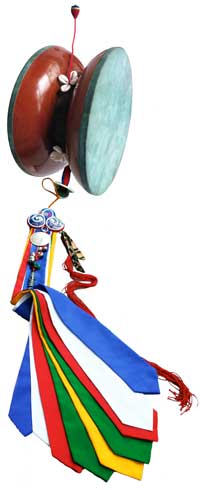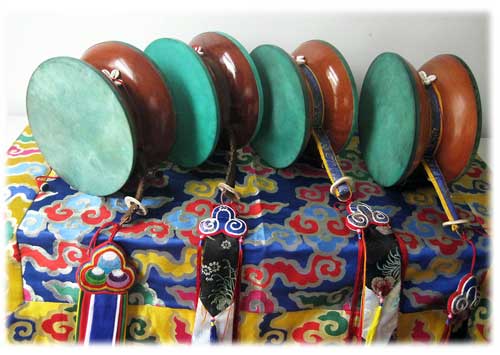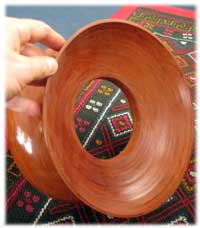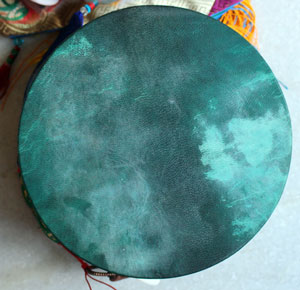The Chöd Damaru
Damaru Fabricated according to ancient tradition
The Chod Damaru (Choda) is the central instrument of Chod. It is a sacred Vajrayana implement that, if made correctly, has extraordinary properties:
- It is the dwelling place of the divine feminine, the Dakini;
- It is itself synonymous with the enlightened forms of Prajnaparamita, Vajrayogini and Troma.
- The damaru is the sound of Sunyata or complete openness, a bridge that connects us to the essential source, the basis of being that is beyond name and form.
- It is also a unique channel for the profound blessings and power of the lineage and a portal for the mystical forces that protect the dharma.
- The damaru is thus the sound of the dharma itself and a proclamation of the fearlessness of the solitary yogin or yogini.
- All this being so, an important and deep relationship comes to exist between the Chod practitioner their Chod drum.


Every part of the drum has both symbolic meaning and energetic function and so have to be made according to exacting specifications. Until recently, the art of making these according to the ancient Vajrayana requirements was almost extinct. But fortunately, our Bhutanese fabricator is a Chod practitioner himself who upholds the highest standards of workmanship and respect for sacred implements.
These Choda will last a lifetime as a fitting vessel for taming our own mind and that of suffering sentient beings. As sacred works of art, they can be passed on with pride to future generations of practitioners!
Wood
- The drum shell is made of finest hand picked SengDeng wood (Acacia spp.) or Rosewood (Pterocarpus santalinus), according to tradition, free of defects, cracks, etc., with exquisite finish.
- Proper dimensions of the Chod damaru are maintained, showing a 2:1 ratio of diameter, depth and the opening between the two sides or bells of the damaru.
- They are finished so that the wood grain shows, whether of the “gold” style (SengDeng) or “black style” (Rosewood).

Mantra
The interior of the drum has a red pigment ground, upon which are hand-drawn gold mantras and seed syllables, as prescribed by traditional texts and terma. These include mantras of the Prajnaparamita, Dudjom Vajrayogini, Troma and so on. Commercial damarus either have no mantras or have cheap photocopied paper mantras glued in.
Skin
In accord with terma, skins are buried with minerals salts (copper) and herbs for a month. Do not lose tone or become warped and damaged.If they become looser from moisture at any time, merely coming into a dry area restores the original tone. The living skins should be gently rubbed with a small amount of lanolin on a regular basis. (Note: the inner skins are marked by the highly secret ’35 Dakini Blood, as prescribed in the authoritative Mindroling Manual of Vajrayana Implements (2003).

Conch and Iron Rings
A white conch shell ring encircles the strap of the collar, having symbolic significance and providing an essential support for the base of the hand holding the strap. A metal ring (iron, steel or copper) connects the strap to the chopen banner.
Band and Hand Strap
We use a broad strap made of leather, in the traditional style. The handle is thick, making it easy to grasp and comfortable for long playing. The suede texture of the leather helps prevent chaffing or blistering, familiar problems during long Chod
Cases
The case, or “shoop,” is not just for carrying the damaru. Our cases are sturdy with wider straps, tight fit and a moisture-protective red wool lining throughout. The case also has a removable DamaruWorks crest.